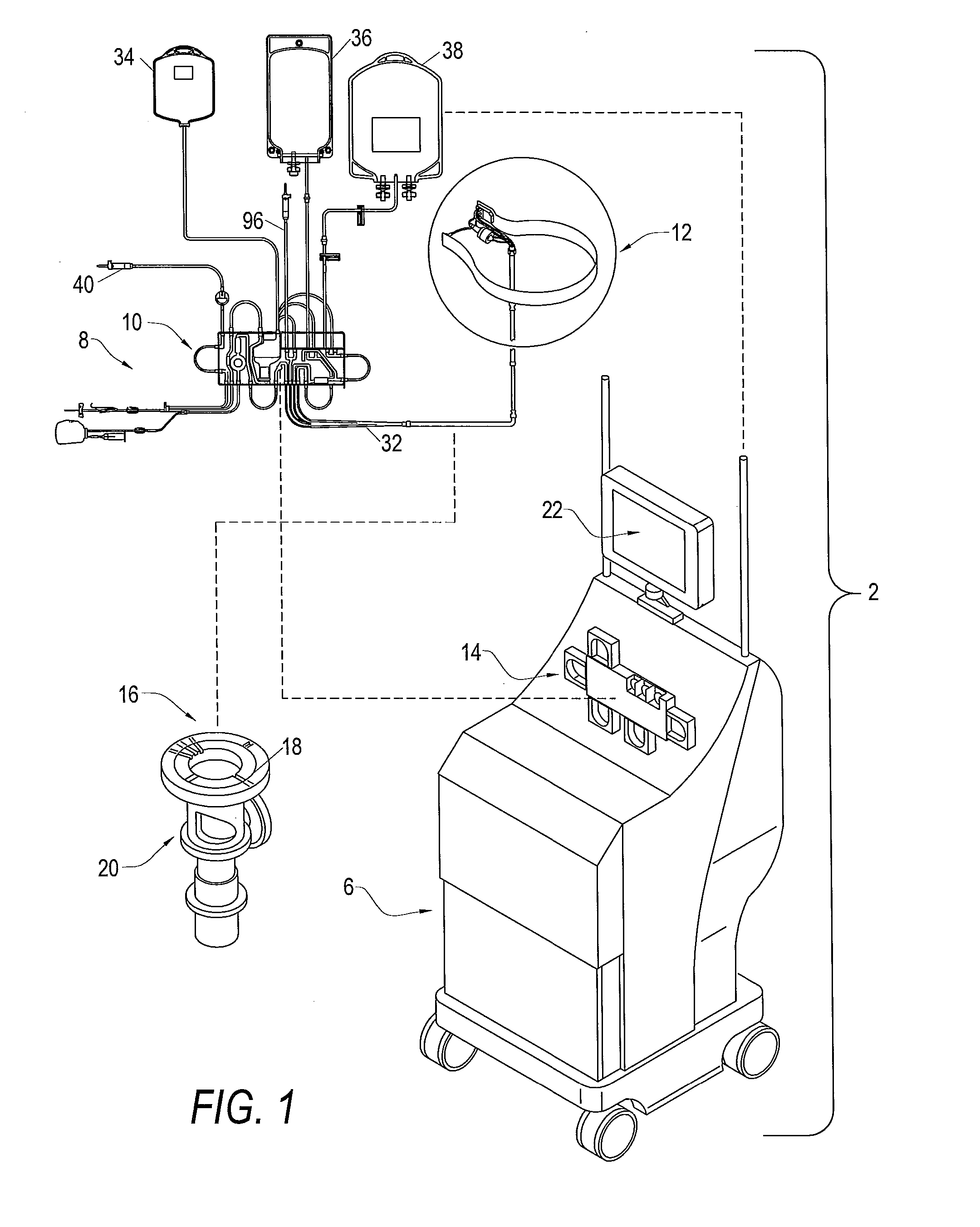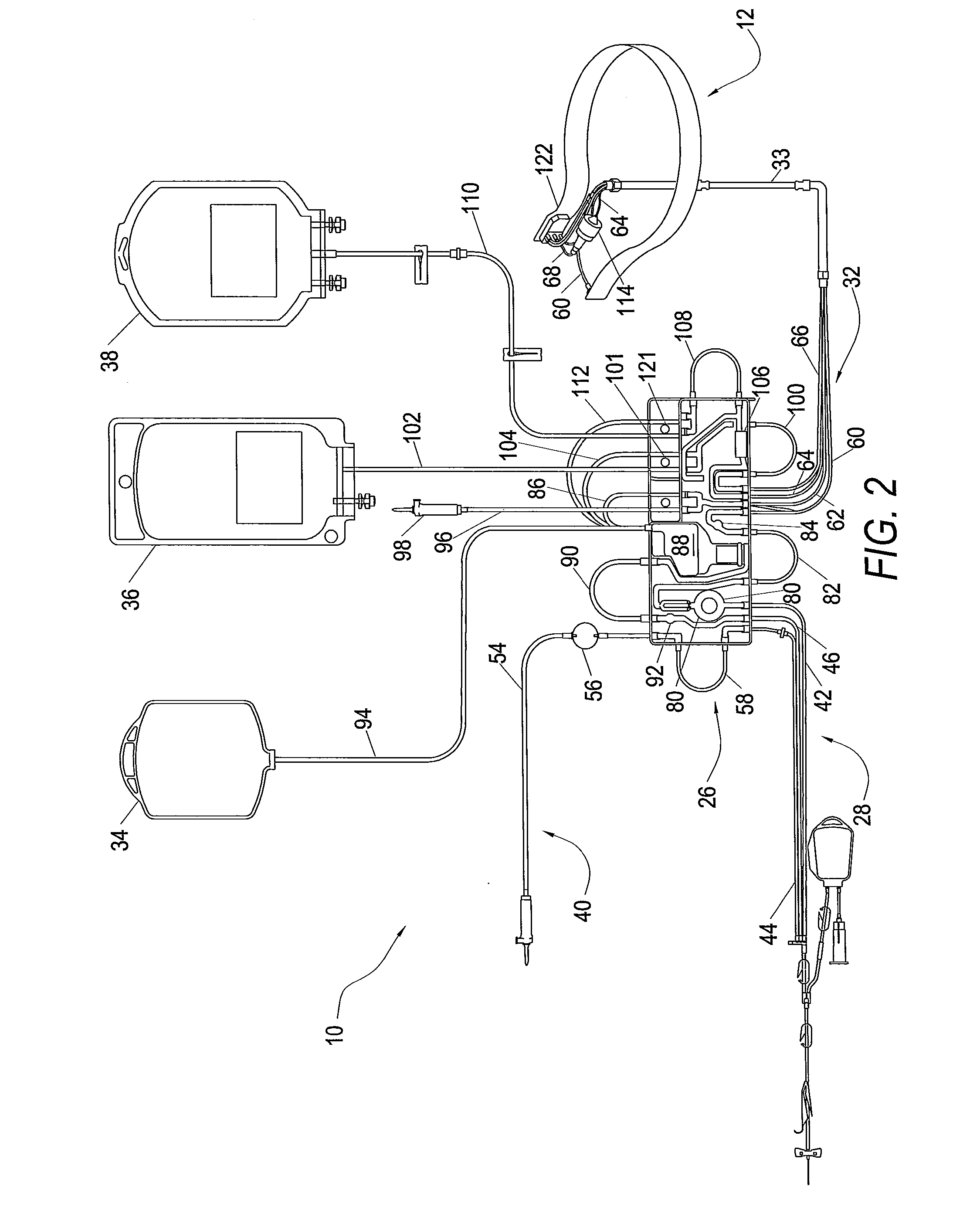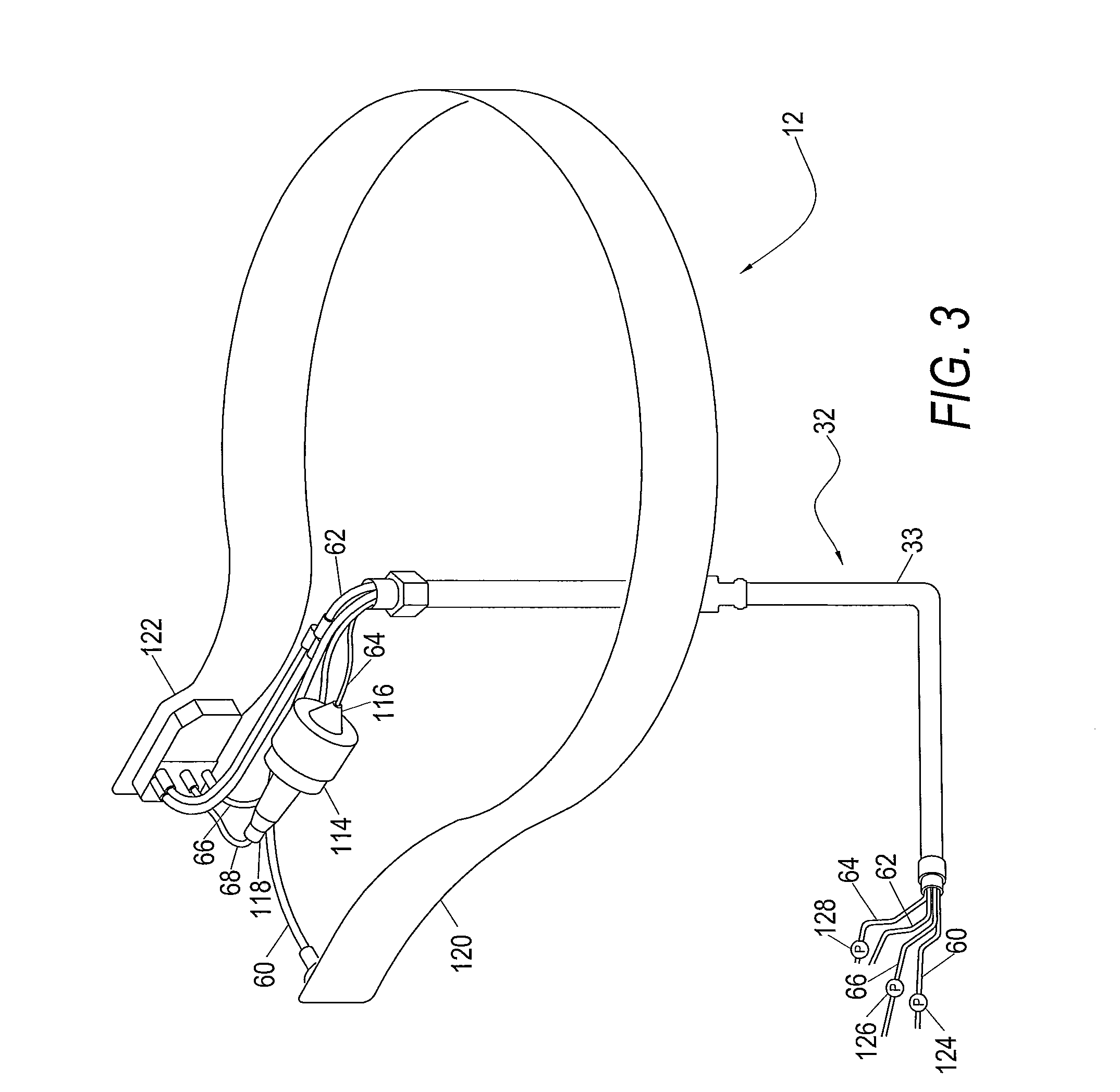System for Blood Separation with a Separation Chamber Having an Internal Gravity Valve
a separation chamber and gravity valve technology, applied in separation processes, laboratory glassware, centrifuges, etc., can solve the problems of reducing the therapeutic efficacy of blood components collected, reducing the overall yield realized, and reducing the purity of individual components obtained using this method. the effect of improving the processing of fluids
- Summary
- Abstract
- Description
- Claims
- Application Information
AI Technical Summary
Benefits of technology
Problems solved by technology
Method used
Image
Examples
first embodiment
[0054]an internal gravity valve 260 is illustrated in FIGS. 5 through 7. The gravity valve 260 comprises a rod 262 symmetrically positioned around the axis 204 of the separation chamber 114. The rod has a density greater than the most dense fluid component to be separated in the separation chamber. Consequently, the rod 262 can be displaced from the outlet 116 to the inlet 118 of the chamber 114 by increasing the speed of the centrifuge, thereby increasing the gravitational field. As the chamber 114 is intended to be mounted on the rotor of the centrifuge with the outlet 116 closer to the axis of rotation of the rotor, the outlet end of the chamber will be referred to as “proximal” and the inlet end will be referred to as “distal” in this description.
[0055]The rod 262 has a centrally located distal bore 264, concentric with the axis 204, extending from a distal end 266 of the rod 262 about one third of the length of the rod. At a proximal stopped end 268 of the bore one or more vent...
second embodiment
[0058]FIGS. 8 through 10 also features a second internal gravity valve 290 comprising a rod 292 having a lumen 294 extending from a distal end 296 to a proximal end 298 of the rod. The distal end 296 is chamfered 299 and engages a conical cup 300 in the center of a disc 302. The disc 302 is affixed to the frusto-conical segment 210 of the main body 200 of the separation chamber 114, about one-third of the distance from the inlet 118 to the outlet 116. The disc 302 has one or more openings 304 surrounding the central cup 300, which allow fluid to flow from the inlet 118 towards the outlet 116.
[0059]The proximal end 298 of the rod also has a chamfer 306 that engages the abrupt frustro-conical segment 248 adjacent the outlet 116. A spring 308 pushes the rod 292 against the outlet as shown in FIG. 10. During the separation phase, shown in FIG. 9, the speed of the centrifuge allows the spring 308 to force the rod against the cup 300 and away from the outlet 116, as shown in FIGS. 8 and 9...
PUM
| Property | Measurement | Unit |
|---|---|---|
| Speed | aaaaa | aaaaa |
Abstract
Description
Claims
Application Information
 Login to View More
Login to View More - R&D
- Intellectual Property
- Life Sciences
- Materials
- Tech Scout
- Unparalleled Data Quality
- Higher Quality Content
- 60% Fewer Hallucinations
Browse by: Latest US Patents, China's latest patents, Technical Efficacy Thesaurus, Application Domain, Technology Topic, Popular Technical Reports.
© 2025 PatSnap. All rights reserved.Legal|Privacy policy|Modern Slavery Act Transparency Statement|Sitemap|About US| Contact US: help@patsnap.com



